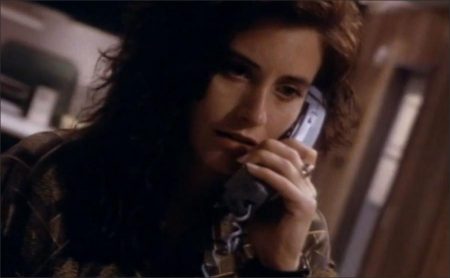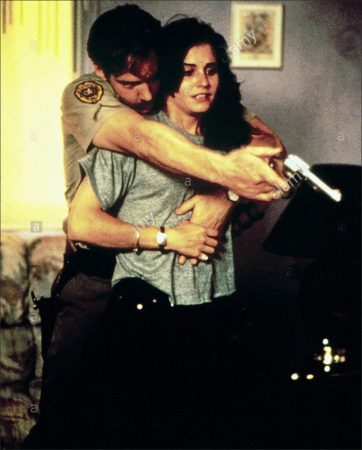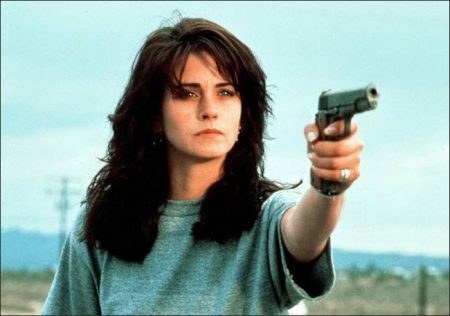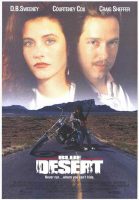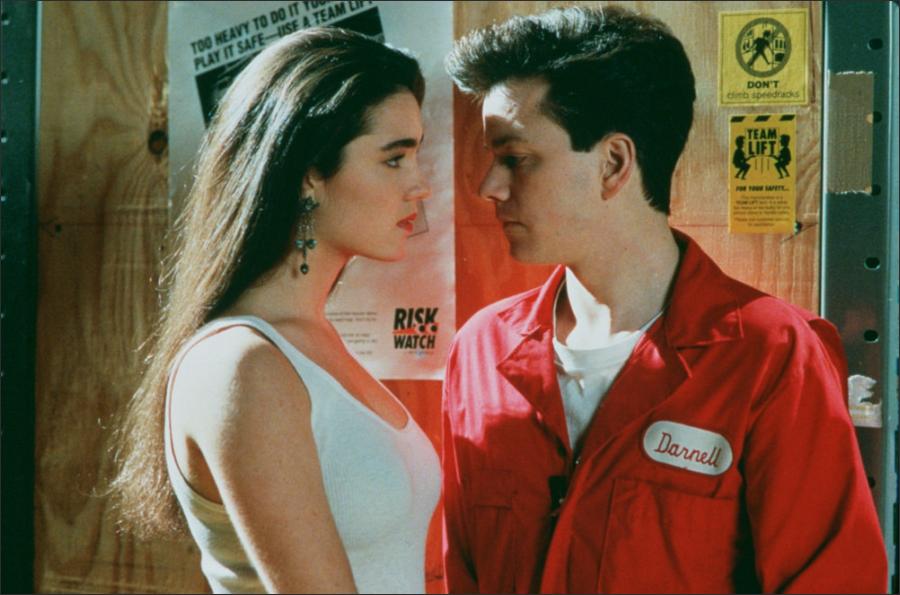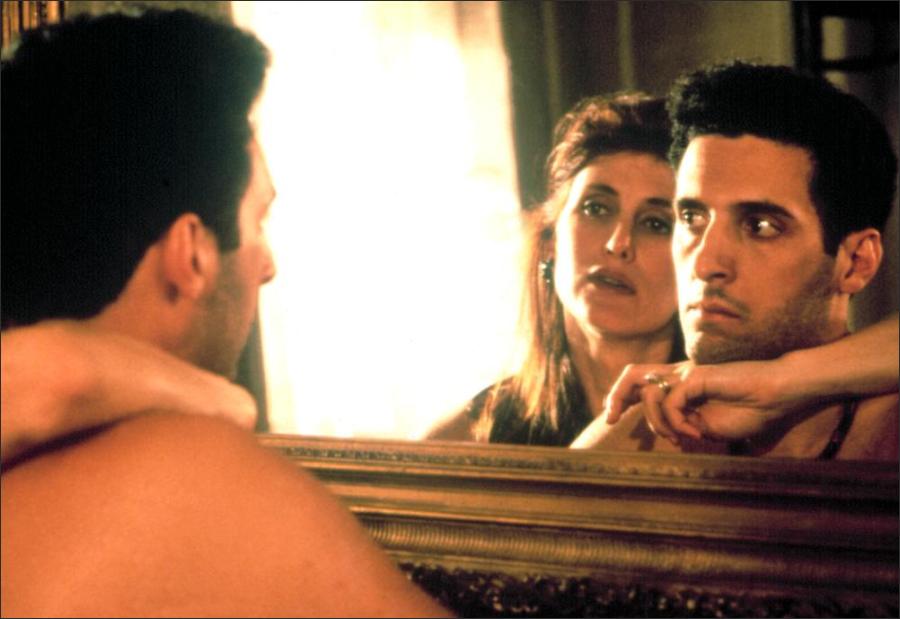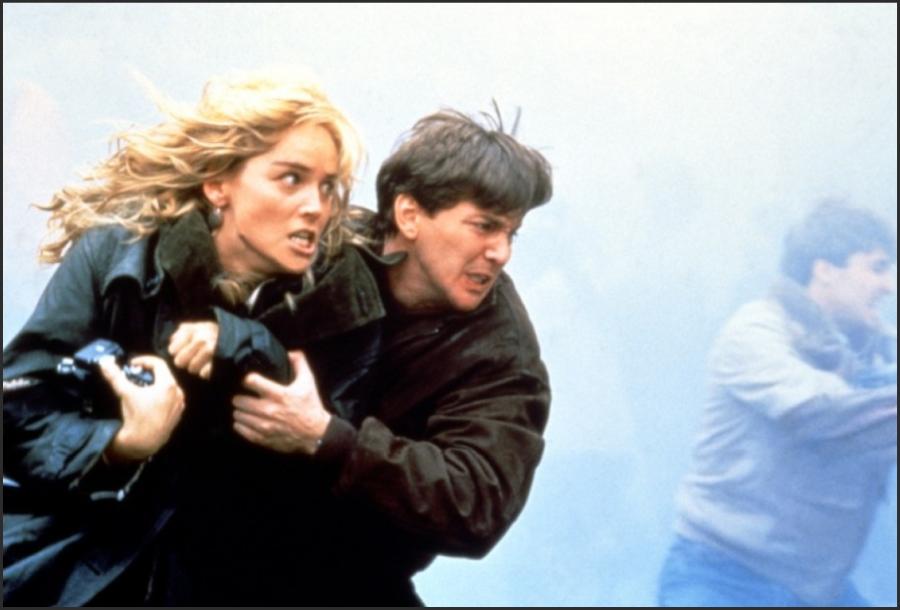Taglines: Taglines: When the desert turns blue… danger begins.
Blue Desert movie storyline. A rape victim, comic book artist Lisa Roberts is given the runaround by the New York City Police Department. Tired with city life, she heads for the wide open spaces of Arizona. Not long afterward, she is propositioned by lowlife Randall Atkins. She reports this to sympathetic local policeman Steve Smith, who replies matter-of-factly that this is not the first time that Atkins has been accused of a sexual offense.
To her amazement, Roberts is later visited by Atkins, who agitatedly warns her not to trust the sweet-natured policeman. Someone is lying about something, and Roberts plainly does not know what to believe. When she finds out, it is nearly too late.
Blue Desert is a 1991 American psychological thriller film starring Courteney Cox and D. B. Sweeney, directed by Bradley Battersby. The original music score is composed by Joel Goldsmith. The filming locations were Inyokern, California and Red Rock Canyon State Park, Cantil, California.
Film Review for Blue Desert
With the taut and terrific “Blue Desert” (at the AFI USA Independent Showcase at the Monica 4-Plex), feature debuting writer-director Bradley Battersby finds disturbing contemporary implications in a classic lady-in-distress thriller.
If “Blue Desert” seems even better than it did when it premiered at the Palm Springs Film Festival in January, it’s because it touches upon some of the same women-versus-men issues that “Thelma & Louise” does but with considerably more clarity. Genuinely scary, it’s an involving genre piece.
Having been raped and then attacked a second time, a beautiful New York comic-strip artist (Courteney Cox) packs up and retreats to a mobile home, borrowed from relatives, on the outskirts of a small desert community. A scruffy, straggly-haired drifter (Craig Sheffer) strikes up a conversation with Cox in a local diner that develops into a casual acquaintance. When he makes a pass at her, she overreacts, knocking him out with a frying pan. This leads to her meeting the local cop (D.B. Sweeney), a clean-cut, well-mannered type who urges her to press charges because the drifter is a convicted sex offender.
Thus begins the artist’s unexpected and unpredictable nightmare, which allows Battersby and his co-writer Arthur Collis to reveal the uneasiness and paranoia with which women view men in a violent society, at a time when so many men are experiencing fear and anger in the wake of women’s liberation. Cox comes to realize that if she is to save herself, she must find in herself some of the strength and assertiveness of her own comic-strip superwoman, whom she calls the Iron Medusa.
Having provided his three principal actors with substantial parts, Battersby, a former AFI fellow, proceeds to draw from them thorough, wide-ranging portrayals. Sheffer must keep us as well as Cox confused and alarmed by his clearly fragile mental state; he brings to mind Jason Patric in last year’s somewhat similar desert thriller, “After Dark, My Sweet.”
Cinematographer Paul Murphy captures the film’s unsettlingly remote locales crisply. However, because “Blue Desert” (rated R for adult situations, language, some violence) is an example of modestly budgeted no-frills filmmaking, it is ill-served by Joel Goldsmith’s trite score, which tends to make it seem more conventional than it actually is. In any event, we’re sure to see more of Battersby and his capable cast.
Blue Desert (1991)
Directed by: Bradley Battersby
Starring: D.B. Sweeney, Courteney Cox, Craig Sheffer, Philip Baker Hall, Sandy Ward, Peter Schrum, Anne Bellamy, Chris Latta, Connie Sawyer, Anita Keith, Diane Adair
Screenplay by: Arthur Collis, Bradley Battersby
Production Design by: Michael Perry
Cinematography by: Paul Murphy
Film Editing by: Debra Bard
Costume Design by: Colleen Kelsall
Art Direction by: David T. Cannon, Dara Waxman
Music by: Joel Goldsmith
Distributed by: First Look Pictures
Release Date: January 9, 1991
Views: 266
